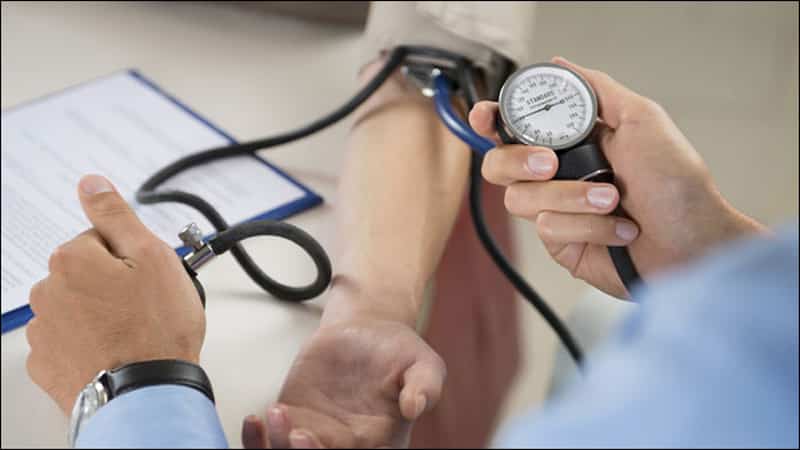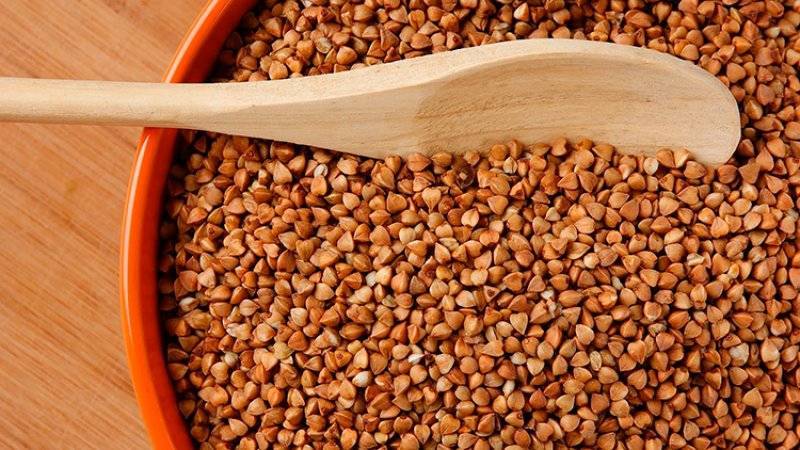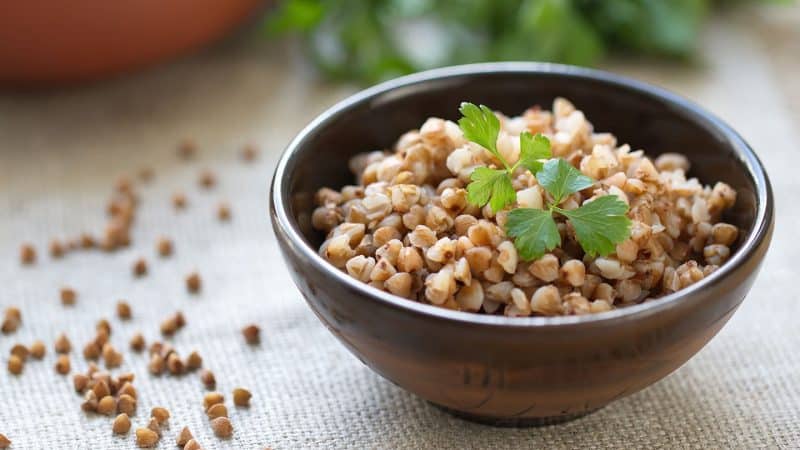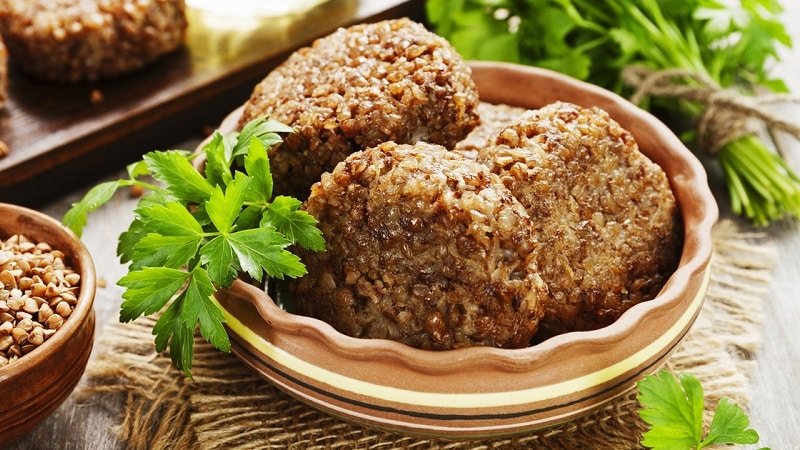How does buckwheat affect blood pressure: does it raise or lower?
Arterial hypertension is one of the ten most common diseases. According to statistics, every fourth person on Earth suffers from high blood pressure. For such people, the urgent question is how to quickly lower blood pressure at home, how to cure arterial hypertension and prevent the dangerous consequences of this disease for the body.
Experts advise adjusting blood pressure (BP) not only with medications, but also with lifestyle changes. The first thing to do is adjust your diet. There is a list of products that nutritionists Recommended for use by people with high blood pressure. This list includes buckwheat.
How does buckwheat affect blood pressure?
Buckwheat is one of the products that have a beneficial effect on overall health, the functions and condition of individual organs and systems. Nature has generously endowed the cereal with vitamins, minerals, amino acids and other substances valuable to humans, so regular consumption of buckwheat porridge supports the vital systems of the body.
 One of the most important effects of cereals is the normalization of blood pressure., normalizing the functions of the heart and blood vessels. Buckwheat helps lower blood pressure. It has a diuretic effect - it removes sodium, chlorine, magnesium in proportion to the increase in urine volume, and reduces the osmotic pressure of intracellular fluid.
One of the most important effects of cereals is the normalization of blood pressure., normalizing the functions of the heart and blood vessels. Buckwheat helps lower blood pressure. It has a diuretic effect - it removes sodium, chlorine, magnesium in proportion to the increase in urine volume, and reduces the osmotic pressure of intracellular fluid.
For reference. There is a lot of information that buckwheat raises blood pressure. This assertion is unfounded. This may be an isolated case, and most likely, the increase in blood pressure is associated with the consumption of buckwheat in combination with other products that normalize low blood pressure.
Mechanism of action
The principle of the effect of buckwheat on high blood pressure is associated with the diuretic properties of biologically active components.A. As mentioned above, they inhibit the reabsorption of water and salts in the kidney tubules, increase their excretion in the urine, and increase the rate of urine formation.
B vitamins together with ascorbic acid improve the condition of vascular walls and capillaries, increase their density and elasticity, and reduce permeability. Buckwheat contains many flavonoids, which have pronounced antioxidant properties and protect cells from damage by free radicals.
Buckwheat at hypertension valued for the presence of vitamin E. It strengthens red blood cell membranes, supports metabolism in the heart muscle, improves blood clotting, normalizes blood circulation processes, reduces glucose and bad cholesterol levels.
By consuming buckwheat, you don’t have to worry about potassium deficiency in the body.. This macroelement is responsible for muscle contraction and relaxation, which acts as a regulating factor in blood pressure. Its insufficient intake leads to a persistent increase in blood pressure, and the latter can cause heart failure, stroke, and liver disease.
The risk of developing hypertension is associated with limited intake of chromium and selenium into the body. Buckwheat is to some extent able to replenish the need for these micronutrients, which serves as a good prevention of cardiovascular pathologies, including arterial hypertension.
Another beneficial property of buckwheat, both for hypertensive patients and for absolutely healthy people, is its positive effect on the immune system. The complex of vitamins and minerals increases the body's resistance to infections and reduces the risk of developing diseases, which is especially valuable if you have bad habits.

Lack of physical activity and excess weight are one of the risk factors for developing hypertension. Buckwheat can be useful here too. Its obvious advantage is low calorie content. During culinary processing, the caloric content of raw cereals is reduced by a third and after cooking it is only 101 kcal per 100 g. There are practically no fats in the grains, but they are rich in proteins and carbohydrates, which the body needs to be full.
Buckwheat porridge is nutritious, allows you to get enough of one small portion, which eliminates the need for additional snacks, and does not accumulate fat. Most macronutrients are absorbed by the body over a long period of time, saturating the human body with energy, while carbohydrates do not turn into new fat reserves.
Grains contain a lot of plant fiber, which cleanses the digestive tract well, removes excess fluid, waste and toxins from the body, normalizes metabolism, and improves digestion. Fiber also increases endurance and performance, stimulates physical activity, due to which more energy is consumed than is supplied with food; the body loses fat reserves, body weight decreases.
Fact. Experts have proven that every 10 kg of excess weight increases blood pressure by 10 mm. rt. Art.
Can it be used if you have hypertension?
Hypertensive patients are advised to include cereals in their daily diet, as buckwheat lowers blood pressure. With high blood pressure, it is extremely important to control the level of calcium, potassium, chlorine, selenium, magnesium, manganese, vitamins A, B, C and other components that ensure adequate heart function and have a beneficial effect on the condition of large and small vessels.
Thus, by systematically consuming buckwheat, you can maintain an acceptable level of blood pressure and prevent the development of possible complications. In addition, unlike medications, the product acts very gently and practically does not cause negative reactions in the body.
Recipes with buckwheat for hypertension

The beneficial properties of buckwheat depend on various factors: variety, grain quality, cooking method, combination with other products. Buckwheat goes on sale in four forms: core, chaff, Smolensk groats (small grains) and buckwheat flour. The most suitable kernel in terms of benefits for the body. This is a cereal made from whole, uncrushed grains, during the processing of which only the surface shell is removed, so all valuable substances remain in the composition.
Preference should be given to premium quality cereals from trusted manufacturers. To be sure of the quality of the grain, choose buckwheat in transparent plastic packaging. It prevents dampness, allows you to visually assess the integrity of the grain and color, see debris and insects.
Advice. When buying cereal, pay attention to its color. Quality product light brown or green is a separate type of buckwheat. The darker the color of the cereal, the deeper the heat treatment it was subjected to, which indicates a decrease in the content of useful substances.
It is not boiled buckwheat that is of great value to the body, but steamed overnight with boiling water. In this form, it maximally preserves vitamins, micro- and macroelements beneficial to the body.
How to steam buckwheat:
- First, sort out a glass of cereal, clean it of foreign impurities, and rinse until the water is clear.
- Pour the cereal into an airtight container with a lid or thermos and pour 400 ml of boiling water. The volume of water can be adjusted depending on the desired consistency. The less boiling water, the more crumbly the porridge turns out.
- Close the pan or thermos tightly. If you are using a saucepan, cover the top with a warm blanket and leave the grains overnight to reach condition.
Another important point is food combination. It is necessary to correctly combine buckwheat with other products so as not to provoke fermentation in the intestines, a feeling of heaviness, bloating and other unpleasant symptoms from the digestive system.
Buckwheat goes well with kefir:
- Rinse 200 g of buckwheat until clear water.
- Pour 400 ml of kefir at room temperature over the cereal. Leave in a warm place, covered, overnight.
- If desired, add 1 tbsp to the finished porridge. l. honey or dried fruits.
Next recipe - vegetarian buckwheat soup.
Ingredients:
- vegetable broth - 2 l;
- egg grains - 100 g;
- onion - 1 pc.;
- medium-sized carrots - 1 pc.;
- chicken egg - 1 pc.;
- potatoes - 400 g;
- vegetable oil - 1 tbsp. l.;
- salt to taste;
- garden herbs: parsley, dill.
Preparation:
- Sort the grains and rinse thoroughly.
- Grate the carrots, cut the onion thinly into half rings, and the potatoes into small cubes.
- Add onions, carrots, and cereals to the boiling broth. After 5-10 minutes add potatoes. Cook over low heat until the vegetables are soft.
- 5 minutes before readiness, pour in a raw chicken egg, stirring constantly. Add vegetable oil and salt to taste.
- Cover the dish with finely chopped herbs and boil again.
You can apply for the second buckwheat cutlets.

Products:
- buckwheat - 200 g;
- chicken or turkey fillet - 0.5 kg;
- chicken egg - 2 pcs.;
- onions - 1 pc.;
- mushrooms - 200 g;
- oat flour - 50 g;
- salt to taste;
- greenery.
How to cook buckwheat cutlets:
- Pre-steam the kernels in boiling water for 4 hours or boil them.
- Place the poultry fillet cut into pieces, onions, mushrooms, and the finished porridge into a blender bowl and beat until smooth.
- Add salt, eggs, oatmeal to the minced meat and mix well.
- Form the minced meat into cutlets, fry them in a non-stick frying pan without adding oil, or bake them in the oven. Serve with low-fat sour cream or sugar-free yogurt.
Harm and contraindications
Despite all the beneficial properties of cereals, long-term and excessive consumption of buckwheat threatens to reduce the concentration of sodium and chlorine ions in the blood. A low concentration of chlorine in the blood is manifested by nausea, vomiting, weakness, muscle pain and cramps, thirst, dry mouth, and mood changes.
With a deficiency of sodium in the blood, fatigue, convulsions, increased excitability, and confusion are observed. If you have an individual intolerance to buckwheat, allergic manifestations are possible: rash, itching, redness and peeling of the skin.
Consumption of buckwheat in excessive quantities requires control over indicators of the state of water and electrolyte balance. At risk are patients with:
- pathologies of the cardiovascular system in the acute stage;
- disorders of the liver;
- diseases of the urinary system of severe course;
- slow metabolism;
- diabetes mellitus
It is necessary to completely exclude buckwheat from the diet if you are allergic to the product; limit its consumption if you have low blood pressure.
Doctors' opinions
Hypertension is a serious disease. When it lasts for a long time, chronic damage to blood vessels, liver, kidneys, heart, and organs of vision develops. It is impossible to completely cure the disease, but it is possible to prevent further development and reduce the frequency of crises. One of these methods is nutrition correction.
Increases in blood pressure can be avoided by taking special products, containing dietary fiber, polyunsaturated fatty acids and vegetable protein. All these and other substances valuable for the human body are found in buckwheat.
Cardiologists advise including buckwheat in your daily menu as a good means of prevention. increase in pressure. But this does not mean that the problem of high blood pressure is solved. To achieve stable remission, it is not enough to just constantly eat buckwheat.
An integrated approach is required, the use of medications, and products that lower blood pressure, including buckwheat, are only part treatment.
Conclusion
Buckwheat is not only incredibly healthy, but also has medicinal properties. Eating it regularly can reduce high blood pressure.Cereals are rich in antioxidants, which relax cells inside blood vessels and the heart, protecting against free radical damage. Thanks to this effect, the vessels become stronger and more elastic, which leads to a decrease in blood pressure.